Why you can trust Tom's Hardware
Beat Saber
Beat Saber is the type of game that benefits more from the increased framerate than then increased visual fidelity. We recommend dialling down the resolution in favor of an increased refresh rate if you're a competitive gamer. The extra framerate makes it feel like you have more time to consider your next swing. When the framerate dips, it's much easier to get overwhelmed and mess up your rhythm.



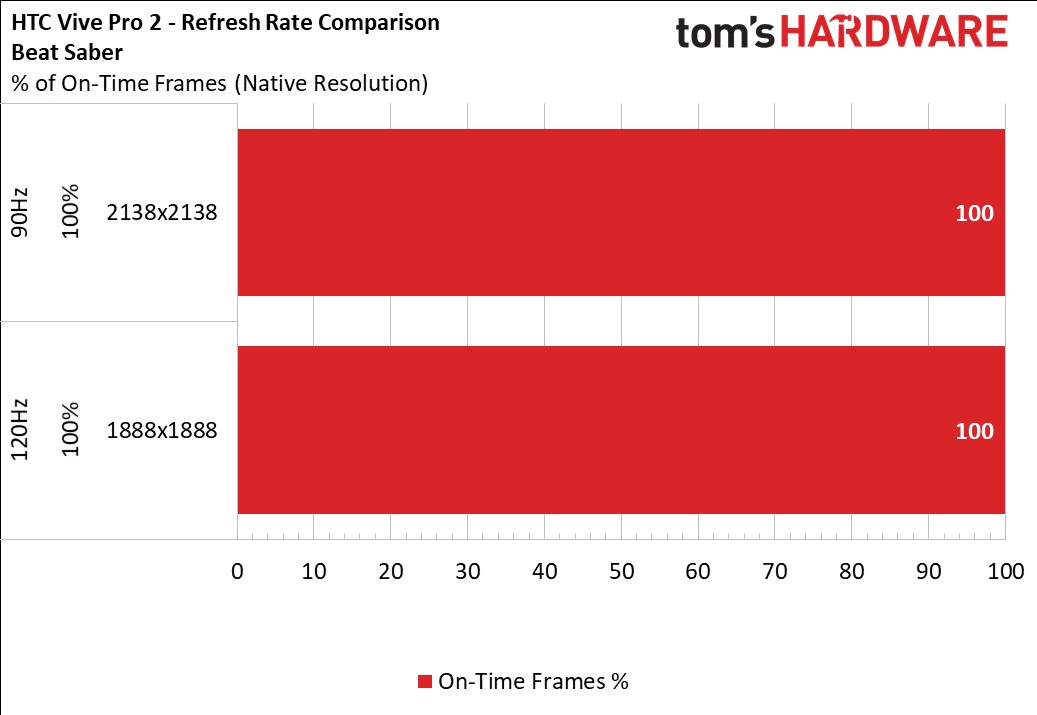












The high resolution of the Vive Pro 2 combined with the 120 Hz max framerate proved too much for our RTX 2080, and we had to scale back the refresh rate in order to avoid relying on frame reprojection to keep the displays fed. It's clear that to get the most out of this headset, you'll want to pair it with an even faster GPU than we had on-hand.
At 90 Hz, the RTX 2080 delivered all frames on time for both resolution settings, but we averaged 89.62 frames per second (fps) when we tried to run the game at 120 Hz with 150% render scale. With the resolution set to 1888 x 1888, our GPU delivered an average of 119.8 fps.
Half-Life: Alyx
Half-Life Alyx demonstrates the value of having a high-resolution headset like the Vive Pro 2. The details of the textures in this game far exceed what you can perceive in a last-generation headset, like Valve's Index, the Vive Pro or Vive Cosmos. If you played this game on a first-gen headset, like a Vive or an Oculus Rift, playing again with a Pro 2 would be comparable to playing the same game on two successive console generations. The difference is staggering.






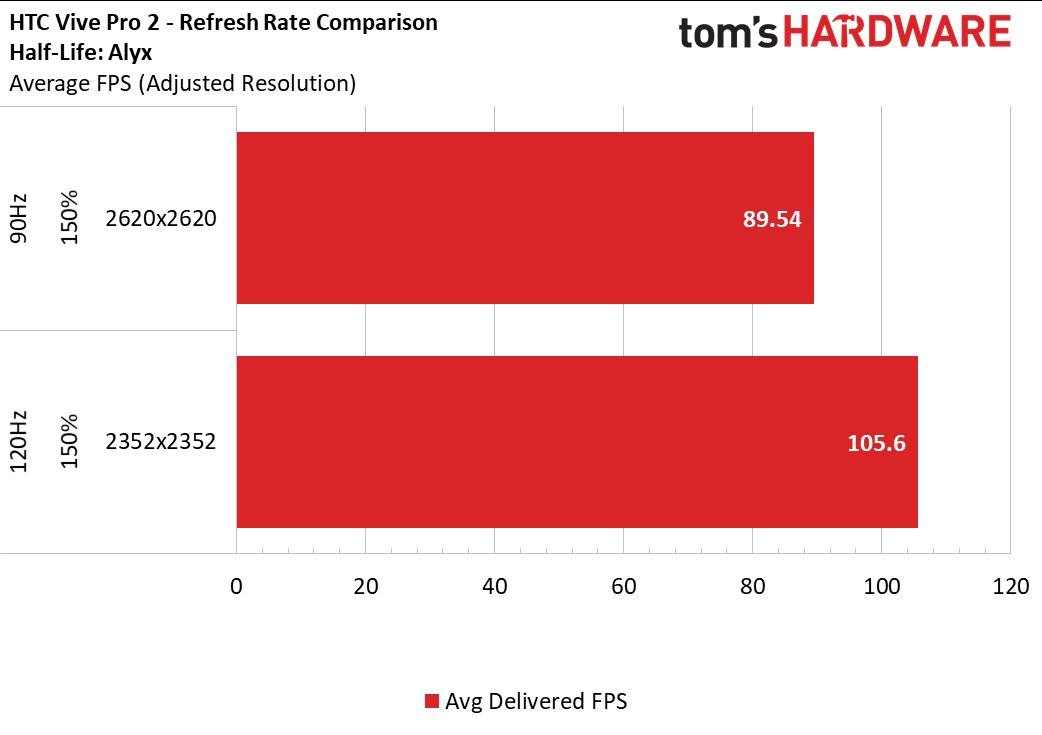









Half-Life: Alyx is a well-optimized game, and our system had no trouble delivering ample performance to play the game at 90 Hz on the Vive Pro 2. We experienced no frame drops at 2138 x 2138 and observed just over 1% missed frames at 2620 x 2620.
With 120 Hz mode active, our system handled 100% render scale just fine with an average of 119.2 fps. Bumping the resolution to 150% render scale proved too much for our system to handle, and we experienced 15.4% late frames, with an average framerate of 105.6 fps.
Pistol Whip
Pistol Whip is another game that gets a striking boost when played at high framerates. We noticed a considerable and consistent score deficit when we ran the game at lower refresh rates. Fortunately, Pistol Whip is a well-optimized title, and our system handled it well.
Get Tom's Hardware's best news and in-depth reviews, straight to your inbox.
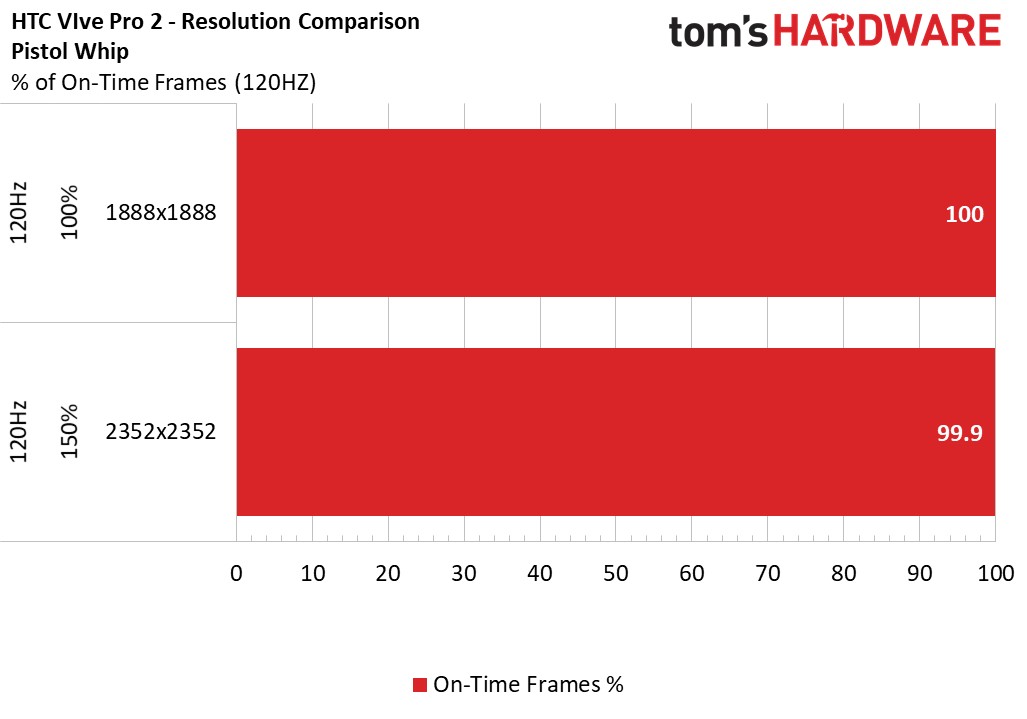





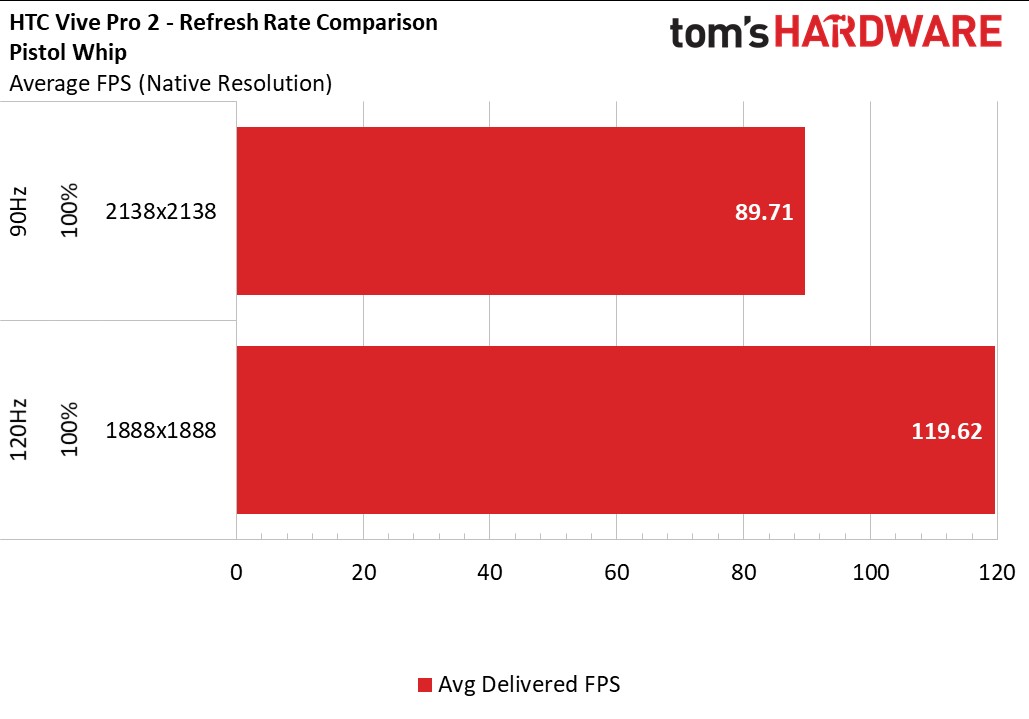
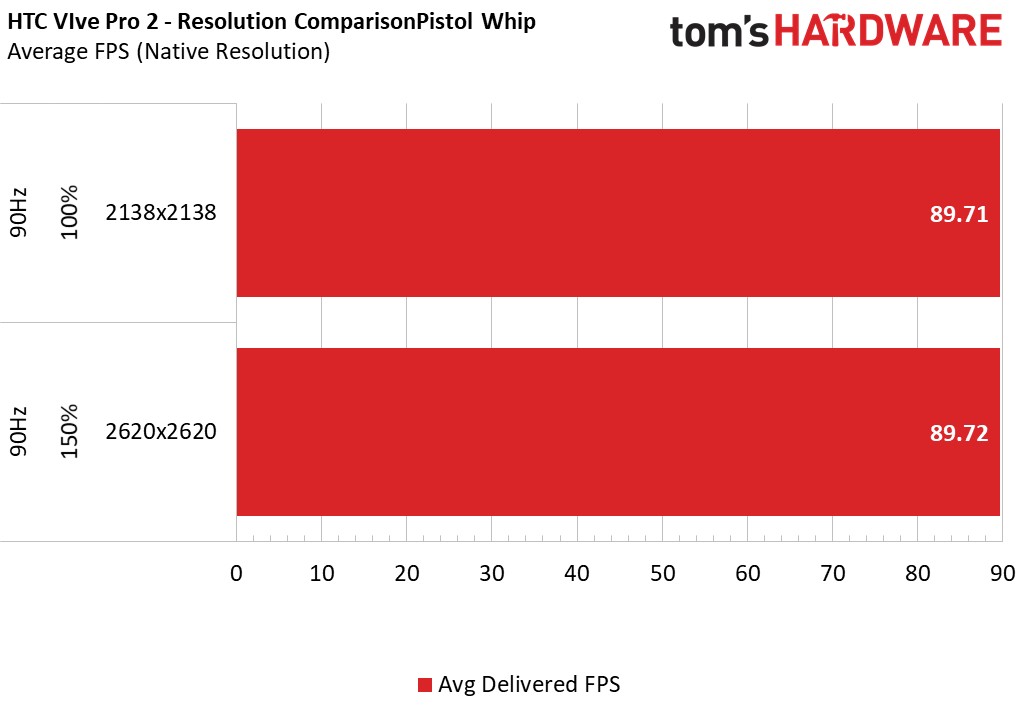






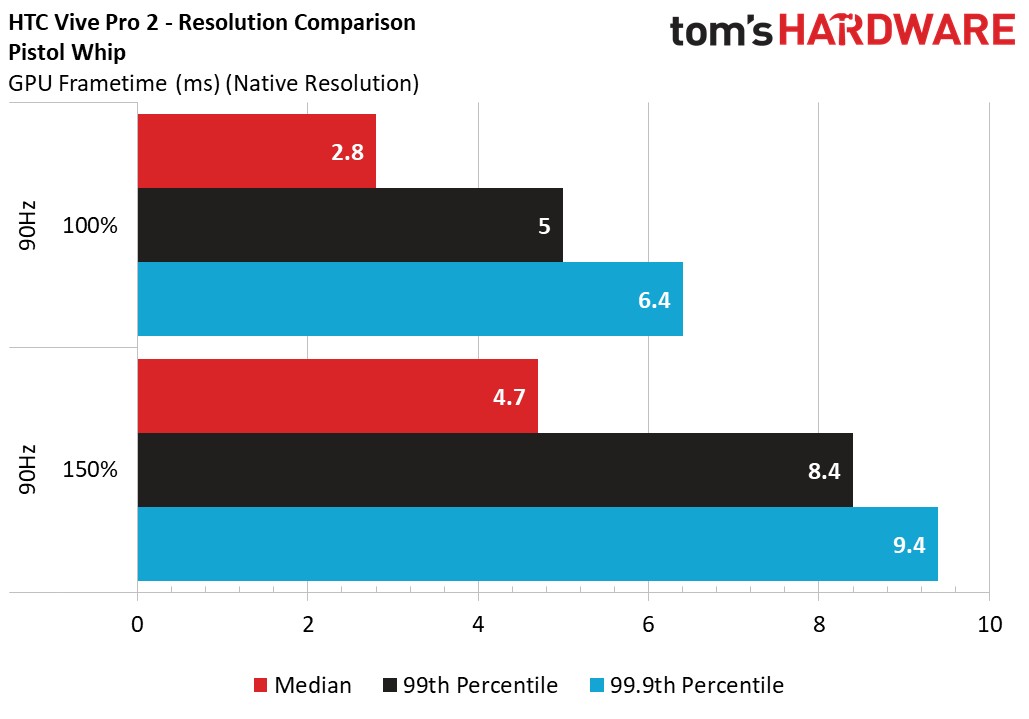

We experience no rendering performance issues at either resolution in either refresh rate. This is one of the few VR games that we could justifiably increase the render scale without a major performance hit. That said, it’s also a title that doesn’t gain any real advantage when ran at a higher resolution.
Shadow Legend VR
Shadow Legend VR looks amazing through the Vive Pro 2. We could easily read the text in the menus and the documents throughout the game. The details of this fantasy world really stood out with this high-resolution headset.













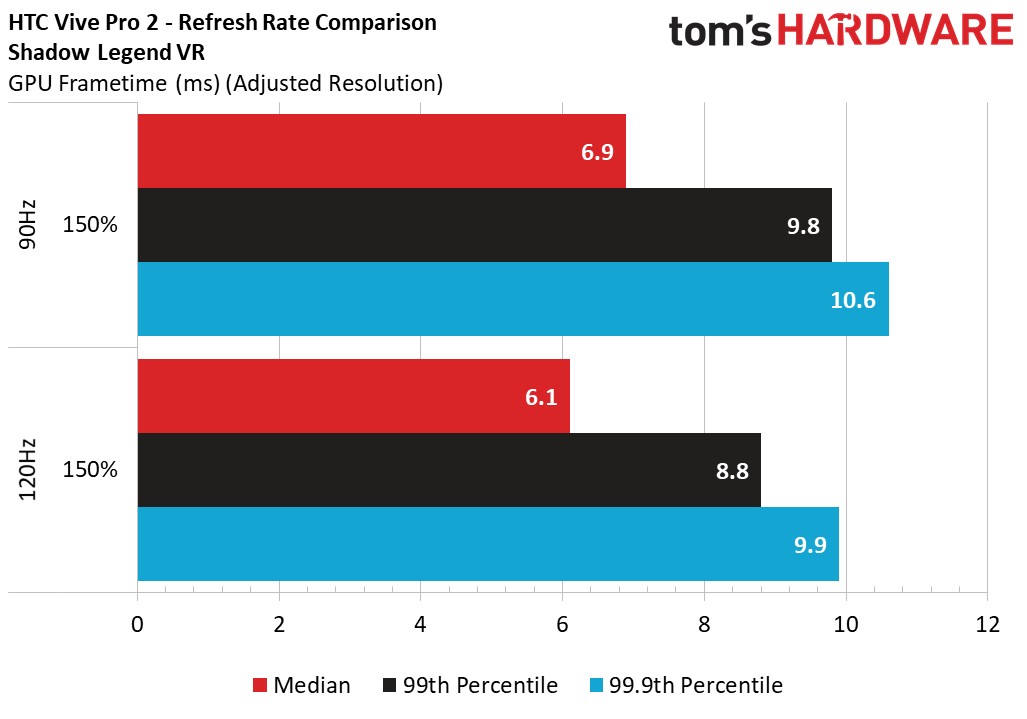
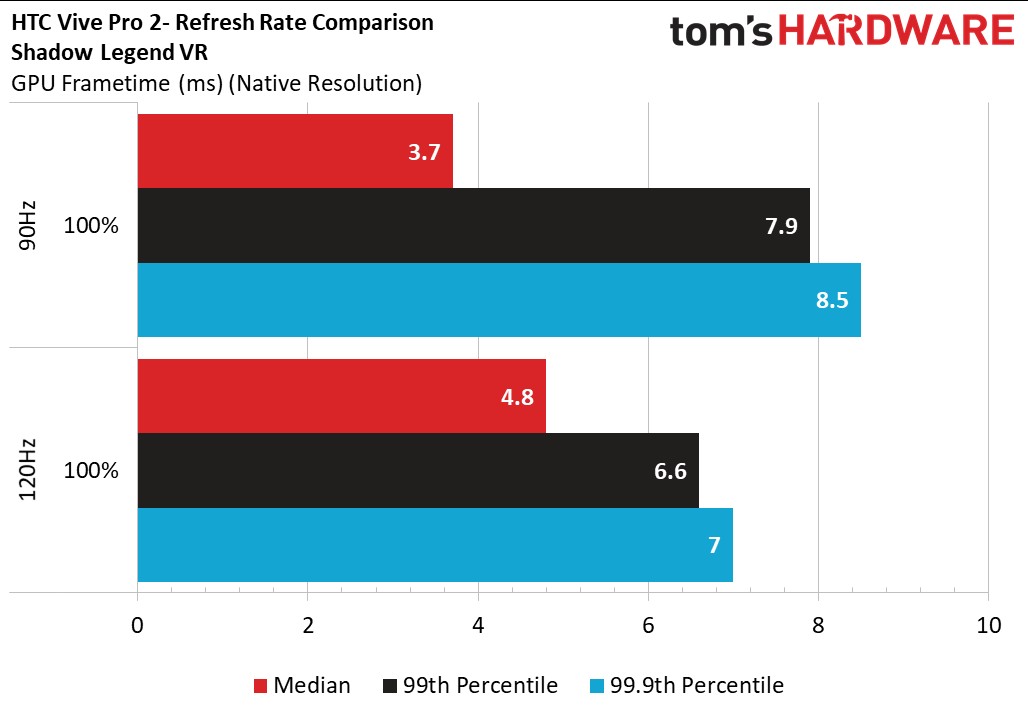

Our system showed little sign of performance issues with either of our 90 Hz tests, both achieving over 88 fps average and never tapping reprojection to maintain perceptive performance. When we increased the refresh rate to 120 Hz, we started seeing lost frames.
With the resolution set to 1888 x 1888, our RTX 2080 managed to deliver 117.6 fps with 100% of the GPU's workload completed on time. We lost 2.7% of our rendered frames to reprojection when we increased the render target to 150%.
Business Over Pleasure
HTC has received much flack from VR fans for its perceived indifference towards the gaming community. The original Vive was a relatively consumer-friendly device in terms of pricing. It was the most expensive VR solution consumers could buy at the time, but at $800 for the headset, base stations and a pair of 6DoF controllers, the first Vive presented an outstanding value. This is especially true in comparison to the competing Rift, which didn't offer room-scale tracking nor included tracked controllers.
When the Vive Pro launched at $799 for just the headset, people were understandably upset at the price tag. It was still an excellent VR device but never a great value option for gamers. Likewise, the Vive Pro 2 is a good VR headset, but it's probably not a great option for most gamers unless you’re a hardcore flight simulator fanatic or in one of the other few niches that’d benefit from the increased visual fidelity. You must also possess a computer that can drive the framerate to match the 120 Hz panels. In that case, you'll probably see much value in the Vive Pro 2. But for the most part, HTC targets the right audience when it says the Pro 2 is for business use.
Most gamers would be better served with a headset like the Valve Index, which provides a better audio experience and good enough visual experience while offering high refresh rates at a resolution that most modern GPUs can push. And if a broader FOV is of interest, Pimax's headsets will give you a much wider window into virtual worlds than HTC’s current offerings.
For business owners, the Vive Pro 2, and for that matter, the whole Vive Pro lineup, offer substantial benefits over rivals. HTC's professional warranty covers all hardware for two years, with a no-questions-asked priority replacement service. The Pro 2 also includes a commercial license, which means businesses can sell training solutions with Vive Pro headsets with no additional licensing costs. The Pro 2 is also an easy upgrade for companies that have already invested in a SteamVR solution.
Bottom Line
The Vive Pro 2 is an excellent headset for the target audience that it is meant for, but it's probably not the best option for most gamers.
If you have been using an original Vive for the last five years and are looking for a resolution upgrade, the Vive Pro 2 would certainly fit that bill. It’s compatible with all legacy Vive and SteamVR accessories and is a significant upgrade from the original headset.
But it’s not a significant enough improvement compared to the original Vive Pro or Valve Index to merit the upgrade unless you're the type of person that needs to have the latest and greatest toys.
Kevin Carbotte is a contributing writer for Tom's Hardware who primarily covers VR and AR hardware. He has been writing for us for more than four years.